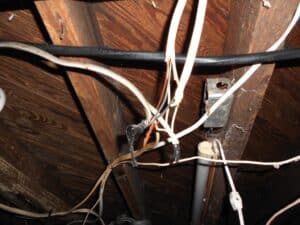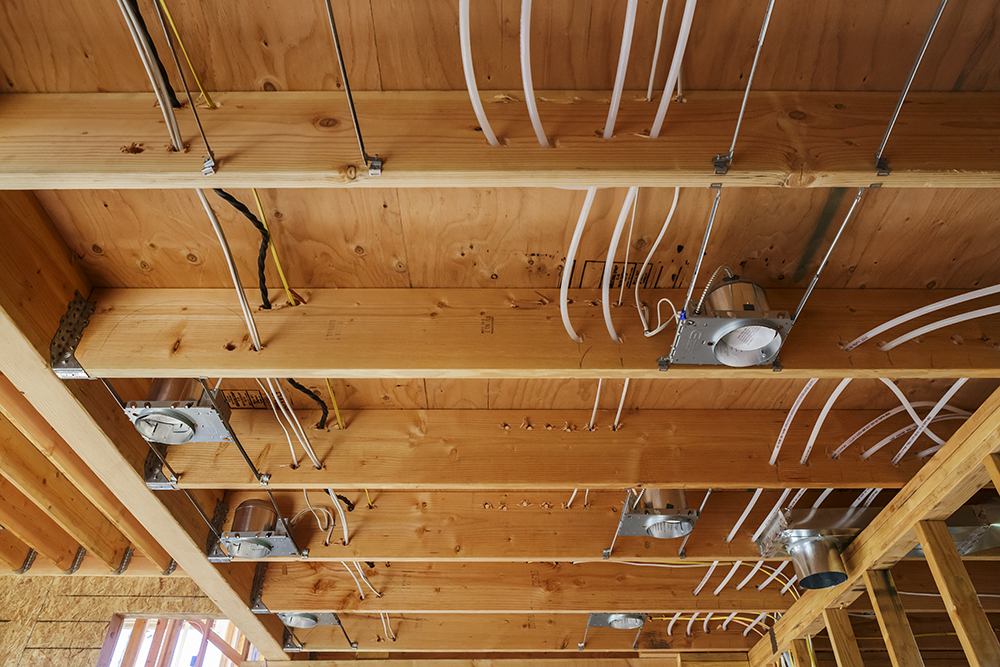Last updated on December 21st, 2022 at 03:46 pm
If your home needs rewiring, it’s best to call in the professionals. Check out these considerations to save time and money when you’re rewiring a house.
Are you looking to welcome the New Year with a home improvement project? Before you get busy with your kitchen and bathroom remodeling, perhaps you need to revisit your home’s electrical wiring.
Data reveals that 30% of residential electrical fires involve electrical wiring. Many factors lead to your wires becoming fire hazards. If you live in an old house, your wiring is likely old as well.
The older your electrical wires are, the more prone they are to heating up and catching fire. Thus, the need for rewiring a house comes into mind.
However, rewiring a house regardless of its age is no simple task. There are important factors that you need to consider before performing the rewiring.
Continue reading below as we guide you with the essentials of house rewiring.
1. Rewiring a House: Do You Need It Now?
The first factor to consider when it comes to rewiring a house comes in the form of a question. “Does your house need to go through a rewiring now?”
You must first answer this question with certainty and accuracy before proceeding any further with anything. Resolving this question will dictate the tone and direction of your next move.
This question applies if you’re the homeowner or if you’re looking to buy a pre-owned house. If the house is at least 25 years old, then it is likely that you need to replace its electrical wiring.
But how do you know exactly if the wires are still good or due for replacement? The answer is securing an electrical conditioning report. This report involves testing your home electrics, particularly their performance.
The results of this test will tell you if you need to rewire your house or just let it be at the moment.
2. The Age of Your Wiring Matters
You also need to determine the age of your electrical wires. Telling the age of your wiring is a tall order, considering their placements. Most of these wires are behind the walls.

Other wires and cables are in the loft space. However, other ways will give you an idea of how old your wires are. Find the fuse box of your house and inspect it.
How does your fuse box look? Is it an old-fashioned fuse box that features big and white ceramic-style fuses? If that’s the case, then your house needs a complete rewiring.
But if your house is new, it will likely come with residual current devices (RCDs) and circuit breakers. These are safety devices that automatically cut off electricity whenever there is a major electrical problem in your house.
Also, you want to inspect your home’s light fittings for visible cables around the fuse box. If you see one, check its color and style. If you see white or grey PVCu wiring, then the house comes with modern electrical wiring.
Don’t be lazy in determining the age of the wiring. As you add more devices to your home, old wiring may not be able to keep up with the power surge. With so many gadgets working or charging at the same time, your old wiring can easily heat up and burn.
3. Consider the Process
The next thing to consider when rewiring an old house is the rewiring process itself. Find out how much the rewiring will cost you. Statistics reveal that most homeowners in the United States pay an average of $2,100 on rewiring.
Of course, this number can go up depending on the size of your property. Other factors that affect the prices include the number of rooms that need rewiring. The more rooms you have, the more wires you will need.
You may wonder why the price of rewiring is relatively costly. This is because the process can be quite intricate. Rewiring involves removing the old ones which rest behind your walls.
This means the electrician needs to tear down certain parts of the wall to retrieve the old wires. Thereafter, they will replace them with new ones. These new wires are non-metallic and come inside a plastic casing.
You also need to consider the length of the process. If you have a big house, rewiring may take weeks to finish. Also, expect a lot of mess and dust to come out as the electrician chases the walls.
You will also need to move some of your furniture to different spots.
But perhaps the most significant impact of the rewiring process is that you need to turn off your home’s electrical supply.
4. Safety is a Priority
Another key consideration you should never take for granted is safety. You need to keep your home safe during the rewiring process. Whether you hired a professional or not, you need to turn off the main power source.

Turn off the main power source for the duration of the rewiring. If the electrician needs to work anywhere near the service panel, lock the panel. This will keep anyone from accidentally moving any of the switches.
Also, you need to make sure everyone working sports complete protective gear. For starters, you need to protect your eyes with a pair of goggles. The goggles will shield your eyes from any wire trimmings, electrical arcs, and insulation debris that may fly into the air.
Next, you want to protect your hands by wearing a pair of gloves. As for your feet, go for a pair of boots with thick soles. These durable boots will keep you from slipping and falling during the process.
Furthermore, you need to be aware of your surroundings. If you or the electrician is working in the kitchen or bathroom, make sure there is no trace of water on the floor. Water and electricity can lead to fatal repercussions.
And no tip involving safety is complete without securing a safety inspection report. This report aims to evaluate the quality and reliability of your electrical system.
5. A Solid Rewiring Plan
With all the intricacies of rewiring an old house, you need to pay close attention to your rewiring plan. You want to avoid making additions and alterations midway through the rewiring project.
These additions can prove to be costly and time-consuming.
Thus, prepare the right way by drawing a plan of your property. Use graph paper and chart every room, space, and corner of your house.
From there, mark the respective positions of your beds and other furniture. Do the same thing for your kitchen appliances and other units.
Thereafter, identify the areas where you want to add some lighting fixtures. These spaces can be beside your bed or under your cabinets. Small as they may seem, they all require wiring preparations.
Additionally, consider adding key upgrades to your home. These include security lighting, feature lighting, and fire alarms.
6. Consider Moving to a Different Place
We mentioned earlier that you need to turn off your main power source while the rewiring is in progress. Since you and your family will not have access to electricity, it is best to consider moving to a different place during the rewiring procedure.
Not only will this reduce the impact of the rewiring on your daily living, but it will also keep your family safe from any form of accidents that may happen.
But if you cannot leave your house, be sure to cover all your furniture and other valuables. This will protect these items from any dust and debris.
As for your electrical equipment, move them to a different room.
7. Future-proofing
Last but not least, consider future-proofing your home. This is a crucial move, especially when the next rewiring of your house will only be after 25 years.
A lot of new gadgets and devices will come out over the next two decades. Thus, you need to look ahead with the number of sockets that you want to have in your home. If you’re planning to have kids, consider their needs too when it comes to the total number of sockets.
Ideally, you want to have three times the number of electrical outlets you currently have.
Signs that Your Home Needs Rewiring
We should also discuss the key signs that your home is in dire need of rewiring. One of the most common signs that there’s a problem with your wiring is when your lights go flickering for no reason.
Yes, lights may flicker especially when they’re about to expire. But if the flickering happens to most of your lighting fixtures, then the problem is with your wiring.
The same thing if your lights suddenly go dim. Did you notice your dining lights going dim after opening one of your larger appliances? This means there’s an overload in one of the circuits.
Loose wiring can cause these circuits to overload.
Another important sign to look out for is frequent power fluctuations. If you also notice a persistent burning smell, it can also be a sign of wiring problems.
Let’s Work on Your House Rewiring, Today!
Now that you know the key considerations when rewiring a house, you can plan accordingly and ensure the safety of your family. Taking the DIY route for a house rewire is possible. But if you don’t have the right tools and knowledge, it is best to call a trusted electrician for the job.









